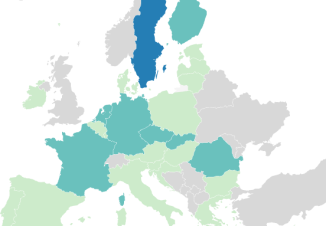
Section 2 of British Columbia’s Pay Transparency Act, which requires employers to provide expected salary or wage information in publicly advertised job opportunities, comes into effect on 1 November 2023. The government of British Columbia has recently provided additional guidance regarding the requirements.
This new guidance provides examples of public postings that would meet the requirement to specify either the expected salary or wage for the job, or the expected salary or wage range for the job. Examples of acceptable expected salaries or wages for a job are specific hourly or annual wages such as ‘$20 an hour’ or ‘$40,000 per year’. With respect to salary or wage ranges, acceptable examples include ‘$20-$30 per hour’ or ‘$40,000 – $60,000 per year’. Unspecified minimum or maximum amounts do not meet the requirement for salary or wage ranges (i.e. ranges such as ‘$20 per hour and up’ or ‘up to $30 per hour’ are not acceptable).
Currently there are no guidelines as to how large the range on an advertised wage or salary range can be, but limits may be set by regulation in the future. Employers do not need to include information about bonus pay, overtime pay, tips, or benefits on job postings. However, they may choose to include this or other information if they wish.
Employers and employees can still negotiate an applicant’s salary, and applicants are not prevented from requesting a higher wage or salary than the amount advertised. Similarly, employers are not prevented from agreeing to pay a higher wage or salary than advertised.
The rules apply to jobs posted by employers and by third parties on job search websites, job boards and other recruitment platforms on the employer’s behalf. They also apply to jobs advertised in other jurisdictions if the position is open to BC residents and could be filled by someone living in BC, whether in person or remotely. However, the requirements do not apply to ‘help wanted’ posts and general recruitment campaigns that do not advertise a specific job opportunity.
The legislation also requires ‘reporting employers’ to prepare and publish a ‘pay transparency report’, providing gender pay gap information. The reporting obligation will come into effect in stages, starting with the government of British Columbia and the six largest Crown corporations, which must produce their first reports by 1 November 2023. Employers with 1000 or more employees must produce theirs by 1 November 2024; those with 300 or more by 1 November 2025; and those with 50 or more by 1 November 2026.
The pay transparency report must be be published on the reporting employer’s website. Those reporting employers who do not have a website are required to post a copy of the pay transparency report in their workplace so that it is available to employees and must provide a copy to members of the public upon request.
The provincial government has provided some guidance as to what the reports will look like. Employers will be required to report the pay gap as the difference between hourly wages, overtime and/or bonuses received by men, women and non-binary people. They may also be asked to report the pay gap in quartiles (top 25% of earners, high 25%, mid 25% and lowest 25%). Real wage data (i.e. dollar amounts) will not need to be disclosed.
In addition, employers are now prohibited from:
Pay transparency rules are on the way in the EU



